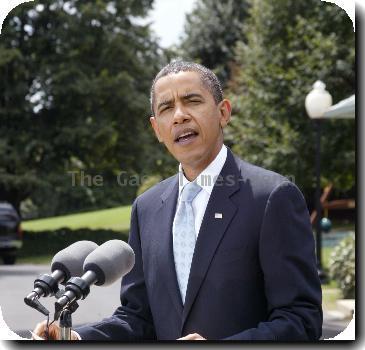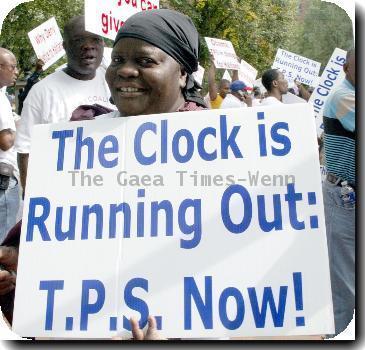Economy likely grew in 3rd quarter, validating recovery; questions remain about its strength
By Jeannine Aversa, APWednesday, October 28, 2009
Economy expected to grow in 3Q, heralding recovery
WASHINGTON — The government issues its first estimate of gross domestic product for the third quarter Thursday, and it’s expected to validate the belief that the Great Recession is over.
Many analysts expect the economy returned to growth in the July-September quarter, expanding at a pace of 3.3 percent. If they are right, it would end the streak of four straight quarters of contraction, the first time that’s happened on records dating to 1947.
But while the economy appears back on its feet, millions are still suffering. The big question: Will it still be standing after government supports are gone?
A turnaround would be the strongest signal yet that the economy has entered a new, fragile phase of recovery and that the recession, which started in December 2007, has ended.
The third-quarter growth rate forecast by Thomson Reuters would be the best showing since a 3.6 percent pace logged in the third quarter of 2007.
Feeding the rebound: hefty sales of cars and homes spurred by government support programs.
“It’s good to have the economy growing again, we’ll take it. But we don’t think that rate of growth is sustainable because it is distorted by all the government stimulus,” said Brian Bethune, economist at IHS Global Insight. “The challenge here is to get organic growth — growth that isn’t helped by fiscal steroids.”
Federal Reserve Chairman Ben Bernanke and members of President Barack Obama’s economics team have warned that the nascent recovery won’t be robust enough to prevent the unemployment rate — now at a 26-year high of 9.8 percent — from rising into next year.
Economists say the jobless rate probably nudged up to 9.9 percent in October and will go as high as 10.5 percent around the middle of next year before declining gradually. The government is scheduled to release the October jobless rate report next week.
The number of new people signing up for unemployment benefits probably nudged down to 521,000 last week, economists predict, in another report due out Thursday. Still, the number of people continuing to draw aid is expected to stay elevated at around 5.9 million.
White House press secretary Robert Gibbs on Wednesday said the administration was hoping for growth in the third quarter, but noted that “in the president’s mind, (there’s) much work to do to ensure an environment that is helping to create jobs.”
Rising unemployment and continuing difficulties by both consumers and businesses to secure loans are among the forces likely to weigh on the recovery.
With joblessness growing and wages stagnant, consumers are expected to turn more restrained in the months ahead. That would put a much heavier burden on America’s businesses to keep the recovery going.
“A frequent question is: ‘What happens when your fiscal stimulus wears off?’” said Edward Yardeni, president and chief investment strategist at Yardeni Research. “I maintained that the recovery should be increasingly self-sustaining once businesses started to rebuild their inventories.”
Many economists expect businesses continued to cut their inventories in the third quarter, but not as much as the second quarter’s record pace. Rebuilding stockpiles — something that’s expected in the current quarter — would boost GDP, but less severe cuts likely didn’t weigh down the economy as much in the July-September period.
Consumers, who cut spending in the second quarter, are expected to show a burst of energy in the third quarter. Some analysts predict consumer spending rose at a rate of at least 2 percent in the third quarter, with most of that going to buy new cars.
Auto sales were temporarily boosted by the government’s Cash for Clunkers program. It gave people a rebate of up to $4,500 to buy new cars and trade in old gas guzzlers. After the program ended in August, auto sales tanked again.
Another force expected to feed third-quarter growth is improved home sales, which have been helped by the government’s $8,000 tax credit for first-time home buyers. Congress is considering extending the credit, which expires on Nov. 30.
Even though the government reported Wednesday that new-home sales fell in September, some analysts think business investment in housing will actually turn positive for the third quarter, the first time that’s happened since the final quarter of 2005.
The collapse of the housing market led the country into the recession. Rotten mortgage securities spiraled into a banking crisis. Home foreclosures surged. The sector’s return to good health is a crucial ingredient to a sustained economic recovery.
A pickup in spending by the federal government, led by efforts to stimulate the economy and on defense, also is expected to play into the third-quarter turnaround.
So will sales of U.S.-made goods to customers overseas, helped by improvements in economies in Asia, Europe and elsewhere. Business spending on equipment and software also could turn positive for the first time in nearly two years.
But many economists predict economic activity won’t grow as much in the months ahead as the bracing impact of Obama’s $787 billion package of increased government spending and tax cuts fades.
The National Association for Business Economics thinks growth will slow to a 2.4 percent pace in the current October-December quarter. It expects a 2.5 percent growth rate in the first three months of next year, although other economists believe the pace will be closer to 1 percent.
Christina Romer, the president’s top economist, in remarks last week said the government’s stimulus spending already had its biggest impact and probably won’t contribute to significant growth next year.
To foster the recovery, the Fed is expected to keep a key bank lending rate at record low near zero when it meets next week and probably will hold it there into next year.
With the economy on the mend, the Fed has slowed down some key emergency support programs but doesn’t want to pull the plug until the recovery is on firm footing.
Even if the economy climbs back into positive territory in the third quarter, it will be up to another group to declare the recession over. The National Bureau of Economic Research, a panel of academics, is in charge of dating the beginning and ends of recessions. It usually makes it determinations well after the fact.
Tags: Automobiles, Barack Obama, Car Buying, Construction Sector Performance, Emergency Management, Government Programs, Labor Economy, North America, Real Estate, Recessions And Depressions, United States, Us-economy, Washington



